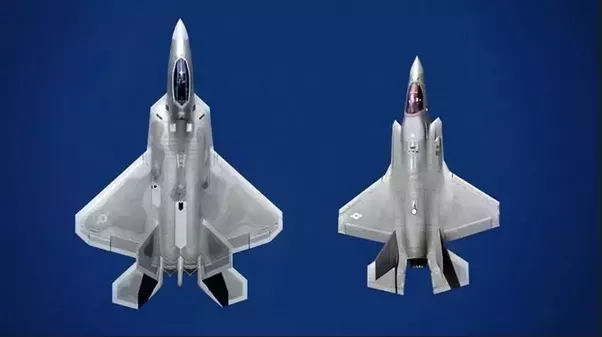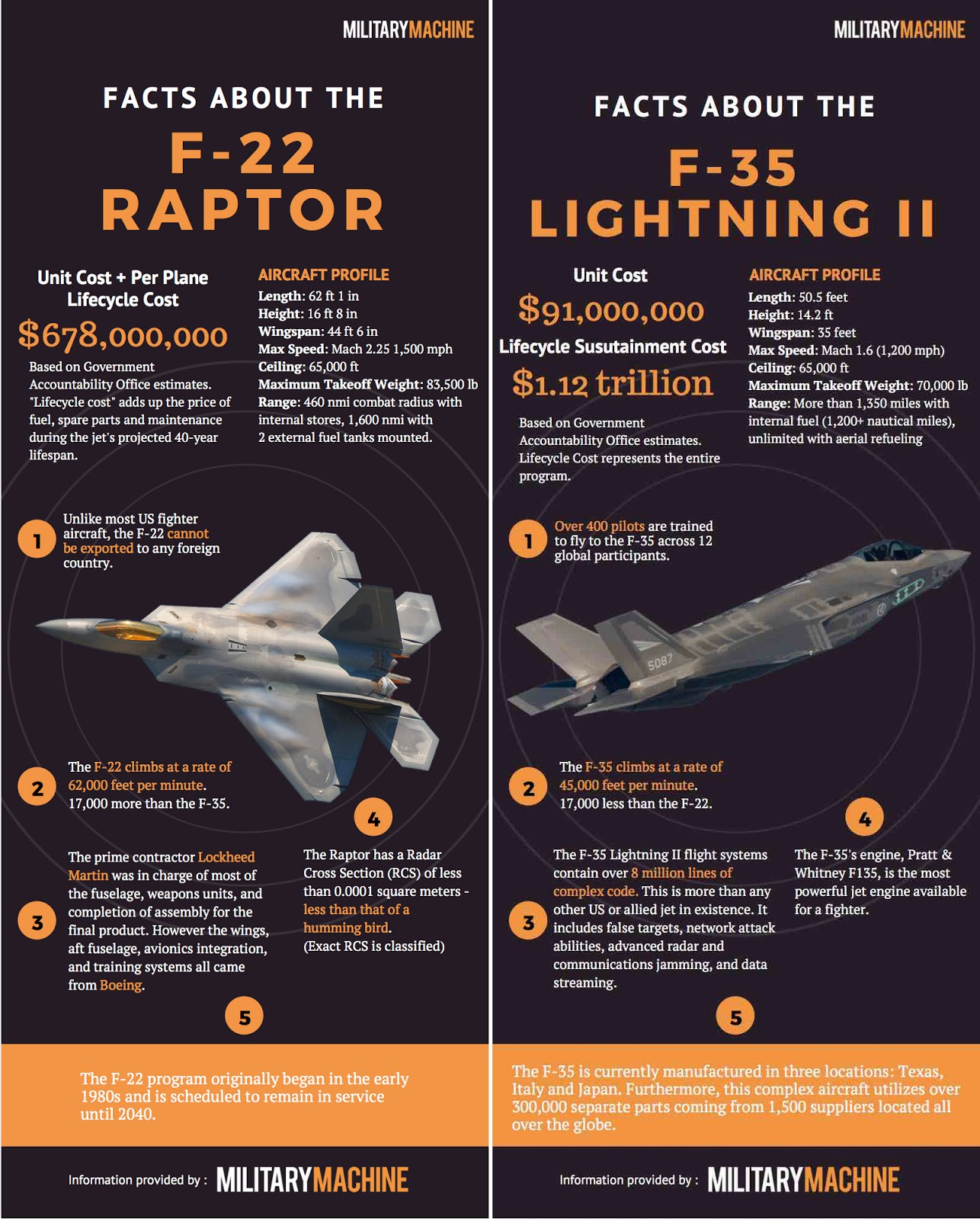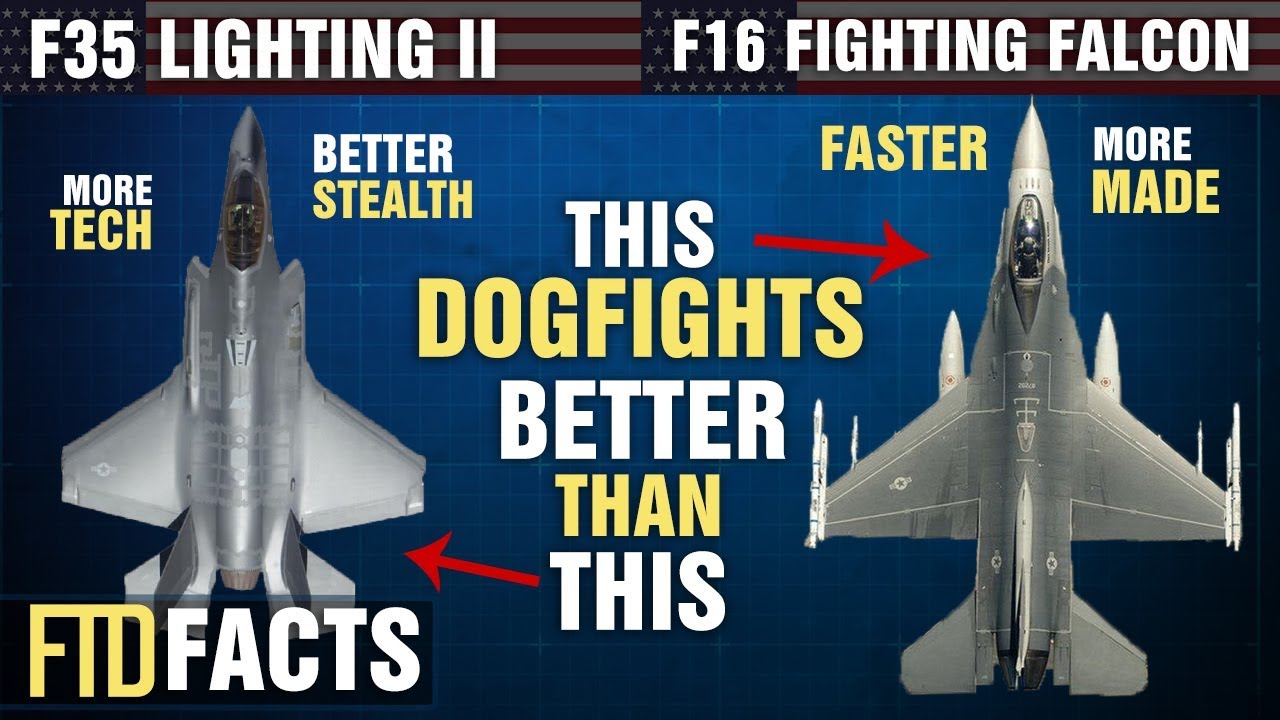F22 vs F35: 5 Key Differences

Introduction to Fifth-Generation Fighters

The world of military aviation has witnessed significant advancements in recent years, with the development of fifth-generation fighter jets being a prime example. Two of the most notable fifth-generation fighters are the Lockheed Martin F-22 Raptor and the Lockheed Martin F-35 Lightning II. Both aircraft have been designed to provide unparalleled air superiority and multirole capabilities, but they have distinct differences in terms of design, capabilities, and intended use. In this article, we will delve into the 5 key differences between the F-22 and the F-35, exploring their unique features, strengths, and weaknesses.
Design and Aerodynamics

The F-22 Raptor and the F-35 Lightning II have different design philosophies, reflecting their intended roles and operational requirements. The F-22 is a twin-engine, fifth-generation supermaneuverable fighter designed primarily for air superiority missions. Its aerodynamic design features a blend of curved and angled surfaces, providing exceptional agility and stealth capabilities. In contrast, the F-35 is a single-engine, multirole fighter designed to perform a variety of tasks, including air-to-air combat, air-to-ground strikes, and reconnaissance. The F-35’s design incorporates advanced materials and a unique faceted shape to minimize its radar cross-section.
Stealth Capabilities

Both the F-22 and the F-35 have been designed with stealth technology, which enables them to evade detection by radar systems. However, the F-22 has a more comprehensive stealth design, with a greater emphasis on reducing its radar cross-section. The F-22’s curved surfaces and internal weapon bays help to minimize its radar signature, making it extremely difficult to detect. The F-35, while still stealthy, has a slightly larger radar cross-section due to its single engine and external weapon mounts.
Avionics and Sensors

The F-22 and the F-35 have advanced avionics and sensor systems, which provide them with exceptional situational awareness and targeting capabilities. The F-22 features a sophisticated AN/APG-77 radar system, which enables it to detect and track multiple targets at long range. The F-35, on the other hand, is equipped with a AN/APG-81 radar system, which provides advanced air-to-air and air-to-ground capabilities. Additionally, the F-35 has a unique Distributed Aperture System (DAS), which provides a 360-degree view of the surroundings, enhancing the pilot’s situational awareness.
Operational Roles

The F-22 and the F-35 have different operational roles, reflecting their design philosophies and capabilities. The F-22 is primarily designed for air superiority missions, where its exceptional maneuverability and stealth capabilities make it a formidable opponent. The F-35, with its multirole design, can perform a variety of tasks, including air-to-air combat, air-to-ground strikes, and reconnaissance. The F-35’s advanced sensors and avionics also make it an effective platform for electronic warfare and intelligence, surveillance, and reconnaissance (ISR) missions.
Comparison of Key Features

The following table highlights the key differences between the F-22 and the F-35:
| Feature | F-22 Raptor | F-35 Lightning II |
|---|---|---|
| Design | Twin-engine, fifth-generation supermaneuverable fighter | Single-engine, multirole fighter |
| Stealth Capabilities | Comprehensive stealth design with curved surfaces and internal weapon bays | Stealthy design with faceted shape, but slightly larger radar cross-section |
| Avionics and Sensors | AN/APG-77 radar system | AN/APG-81 radar system and Distributed Aperture System (DAS) |
| Operational Roles | Primarily air superiority missions | Multirole design with air-to-air combat, air-to-ground strikes, and reconnaissance capabilities |

📝 Note: The F-22 and F-35 have different maintenance requirements, with the F-22 requiring more frequent and complex maintenance due to its advanced stealth design.
In summary, the F-22 Raptor and the F-35 Lightning II are two distinct fifth-generation fighters with different design philosophies, capabilities, and operational roles. While both aircraft have advanced stealth capabilities and avionics, the F-22 is primarily designed for air superiority missions, whereas the F-35 is a multirole fighter with a broader range of capabilities. Understanding these differences is essential for appreciating the unique strengths and weaknesses of each aircraft.
What is the primary difference between the F-22 and the F-35?

+
The primary difference between the F-22 and the F-35 is their design philosophy and intended use. The F-22 is a twin-engine, fifth-generation supermaneuverable fighter designed primarily for air superiority missions, whereas the F-35 is a single-engine, multirole fighter designed to perform a variety of tasks.
Which aircraft has more advanced stealth capabilities?

+
The F-22 has more comprehensive stealth capabilities, with a greater emphasis on reducing its radar cross-section. Its curved surfaces and internal weapon bays help to minimize its radar signature, making it extremely difficult to detect.
What is the role of the Distributed Aperture System (DAS) in the F-35?

+
The Distributed Aperture System (DAS) in the F-35 provides a 360-degree view of the surroundings, enhancing the pilot’s situational awareness. This advanced sensor system enables the F-35 to detect and track multiple targets, as well as provide targeting information for air-to-air and air-to-ground missions.



